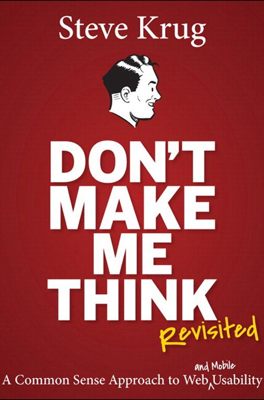Omit Needless Words
Krug's Third Law of Usability
Steve Krug's third law of usability, "Omit needless words," emphasizes concise and vigorous writing. Mirroring E.B. White's advice from The Elements of Style, this principle aims to streamline web content to enhance usability and effectiveness.
- Main Principle: Reduce unnecessary text to clarify the purpose and functionality of web elements, making the website more accessible and less cluttered.
Specific Techniques to Eliminate Excess Words:
Halve the Text, Then Halve Again: Krug suggests initially cutting half the words on a page, then aiming to cut half of the remaining text. This approach helps focus on essential content only.
Reduction Benefits:
- Lowers Noise: Less text reduces distraction, allowing users to focus on valuable content.
- Enhances Content Visibility: Important information becomes more prominent.
- Decreases Scrolling: Concise pages display more content at once, reducing the need for scrolling.
Key Areas to Trim Excess Text:
Eliminate Happy Talk:
- Definition: Happy talk is filler content often used to sound welcoming but usually ends up sounding like pointless chatter.
- Action: Remove self-congratulatory or generic promotional phrases that do not provide real value.
Streamline Instructions:
- Observation: Users typically ignore instructions until necessary, and even then, they prefer them to be concise.
- Strategy: Minimize instructions to essential information, making them straightforward and easy to understand.
Applying Text Reduction Principles
Implementing Krug’s third law involves scrutinizing every piece of text for its utility and relevance. By adopting a ruthless editing stance — eliminating anything that does not support user tasks or enhance understanding — designers can create more efficient and user-friendly web pages.
Upcoming discussions will explore how these streamlined principles apply to complex areas of web design, such as navigation and home page design, which are critical for enhancing overall user experience.
